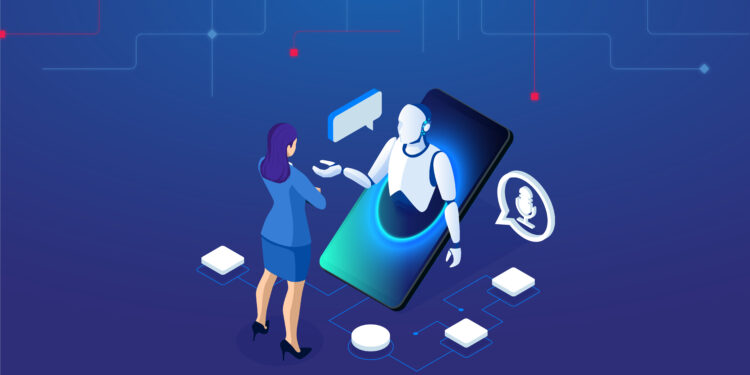One of the most intriguing and divisive 21st-century technologies is artificial intelligence. While AI has produced improvements in productivity and efficiency, there are worries about how it will affect jobs and privacy. However, if developed and used responsibly, AI has the potential to assist in resolving some of the most pressing problems facing the planet.
This article explores how AI can be used to tackle pressing problems like global health, sustainable development, and climate change.
AI should be viewed as a tool that could help find solutions to some of the world’s biggest issues. Here is how and why.
- AI for Climate Change
The use of artificial intelligence has enormous potential for combating climate change and advancing sustainability. Huge amounts of data can be analyzed by AI technologies to learn how to cut carbon emissions and switch to renewable energy sources.
To increase energy efficiency, AI can optimize complex systems like electrical grids. AI can balance the supply and demand of energy, cutting down on waste, by utilizing sensors and predictive algorithms. AI is being used by some businesses to reduce building electricity consumption by up to 25%.
- AI is hastening the uptake of environmentally friendly transportation. AI-powered self-driving electric cars can cut down on emissions from the transportation sector. Smart traffic management systems that reduce congestion and give priority to low-emission vehicles are also made possible by AI.
- AI improves the generation and storage of renewable energy. AI aids solar and wind farms in locating the turbines and panels that will produce the most energy. In order to overcome the limitations of solar and wind power’s intermittent nature, AI also enables the development of better energy storage technologies, such as more effective batteries.
- AI developments have the potential to significantly reduce greenhouse gas emissions and speed up the switch to more environmentally friendly energy and transportation systems. However, risks and difficulties associated with AI need to be addressed, such as job disruption and bias in data and algorithms. AI has the potential to be a potent tool for combating climate change and constructing a greener future with the right safeguards and oversight. Overall, AI will play a crucial role in assisting humanity in overcoming its most difficult problems and advancing toward a more sustainable nighty affairs
Artificial intelligence has a lot of potential to strengthen healthcare systems and improve health outcomes. AI can improve pandemic response, speed up drug discovery, and improve diagnostics.
Diagnostics: AI systems are highly accurate at analyzing medical scans and spotting health anomalies. AI can identify diseases from radiology and pathology scans, including cancer, eye conditions, and heart disease. AI-based diagnostics can support doctors by assisting in the earlier and more accurate diagnosis of diseases.
Drug discovery: AI expedites the process of discovering new drugs. Massive amounts of data can be analyzed by AI systems to find new drug candidates and forecast their potential interactions with the body. AI also makes it possible for researchers to perform virtual molecular screening, which lets them examine how millions of molecules might bind to a particular protein. Pharmaceutical firms can reduce the time and expense of developing new drugs by using AI.
Pandemic Response: AI has een crucial in understanding the COVID-19 virus and creating a successful response during the pandemic. AI has aided in the genome sequencing of the virus, modeling of its spread, identification of effective treatments, and infection tracking. Robotic systems that can sanitize environments or deliver supplies without interacting with people are also powered by AI. AI will help decision-makers and healthcare professionals contain COVID-19 and get ready for upcoming pandemics by processing massive amounts of data and running intricate simulations.
AI for Education:
By generating individualized learning opportunities that are tailored to each student’s needs, abilities, and interests, AI has the potential to revolutionize education. AI systems can examine data on a student’s performance, strengths, weaknesses, and preferences to personalize instruction for the best learning.
AI has a lot of potential to improve humanitarian aid, but it also comes with risks and difficulties. Threats to privacy as well as bias and unfairness in AI systems are issues that need to be addressed. In order to ensure that AI is used responsibly and morally, aid organizations must address these issues. AI has the potential to be an effective tool for detecting crises, efficiently dispersing aid, and defending the most defenseless individuals on the planet with the right safeguards and oversight. In general, if implemented and regulated properly, artificial intelligence will probably transform humanitarianism in the ensuing decades.
AI for Crisis Detection and Resource Allocation
Humanitarian aid efforts could be greatly enhanced by artificial intelligence. Artificial intelligence (AI) systems can be used to identify crisis situations, identify areas where resources are most urgently needed, and make sure the most vulnerable populations receive aid.
Humanitarian crises can be identified as they develop by analyzing social media posts, news articles, satellite imagery, and other data sources using AI techniques like machine learning and natural language processing. When analyzing news reports and social media, AI can spot events like disease outbreaks, atural disasters, or conflicts much faster than humans can. Aid agencies can respond faster and save more lives when crises are detected early.
Once a crisis is detected, AI can help determine how to allocate limited resources. By analyzing data on demographics, infrastructure, terrain, and more, AI systems can identify communities that may be hardest hit or difficult to reach. AI modeling can also forecast how a crisis may impact vulnerable groups like refugees, displaced persons, women, children, the elderly, and the chronically ill. Aid organizations can then prioritize delivering resources to areas and groups with the greatest need.
AI has a lot of potential to improve humanitarian aid, but it also comes with risks and difficulties. Threats to privacy as well as bias and unfairness in AI systems are issues that need to be addressed. In order to ensure that AI is used responsibly and morally, aid organizations must address these issues. AI has the potential to be an effective tool for detecting crises, efficiently dispersing aid, and defending the most defenseless individuals on the planet with the right safeguards and oversight. In general, if implemented and regulated properly, artificial intelligence will probably transform humanitarianism in the ensuing decades.
In conclusion, artificial intelligence has the potential to assist in addressing some of the most pressing issues facing humanity. AI can enhance people’s lives all over the world by improving healthcare, education, and access to resources. This technology has the potential to significantly improve global well-being if the right safeguards and oversight are in place to ensure responsible AI development. Governments and organizations can use AI’s promise to create a better future for everyone by funding AI for social good, fostering multidisciplinary research, and advocating for inclusive policies. Although there are many challenges ahead, there is hope that they can be overcome with the help of AI and human creativity.
















